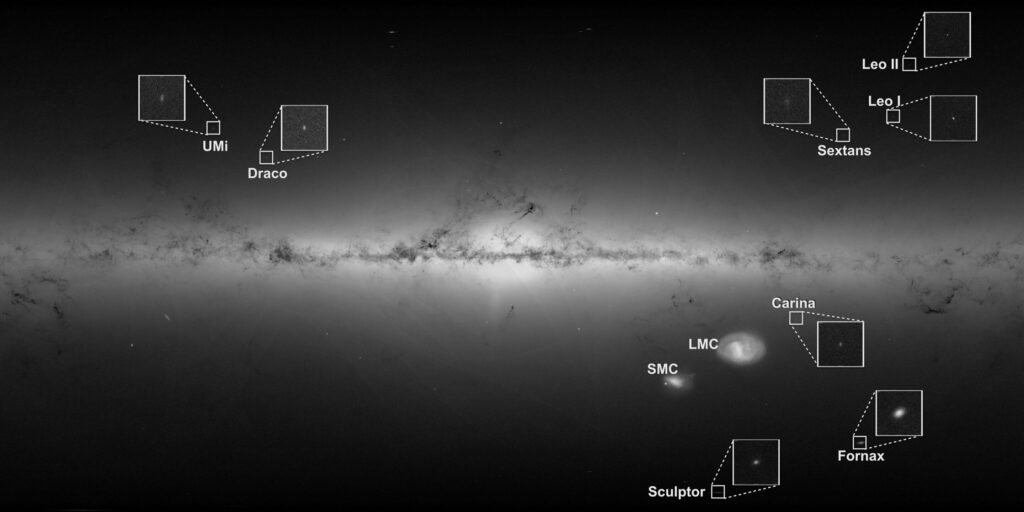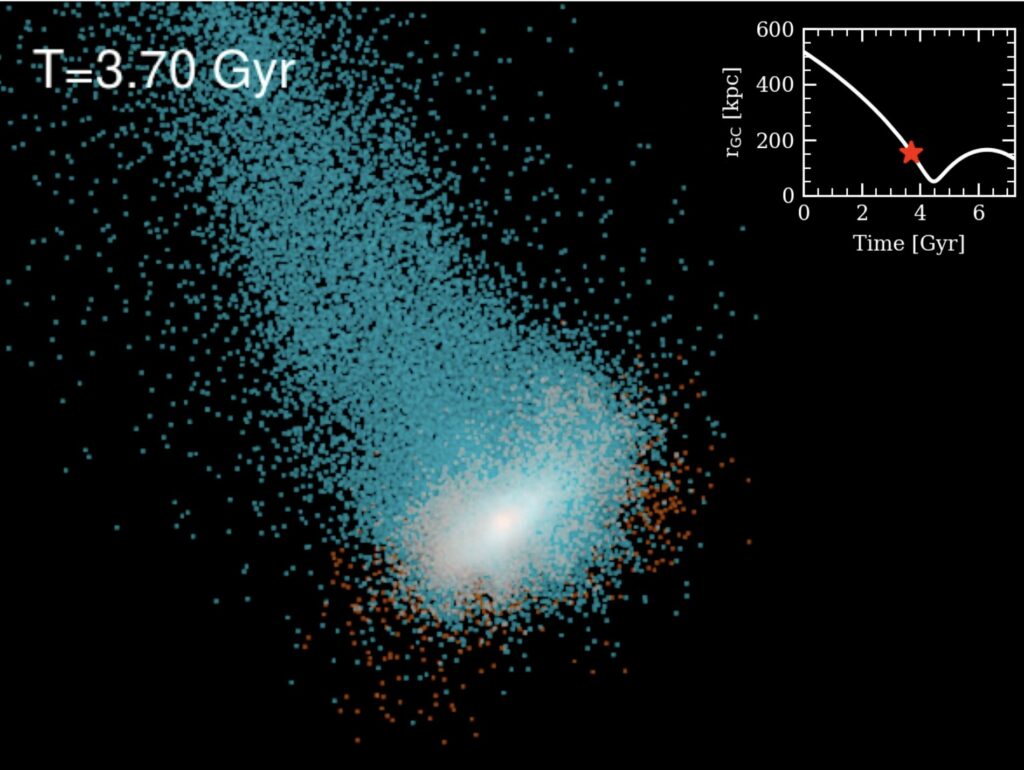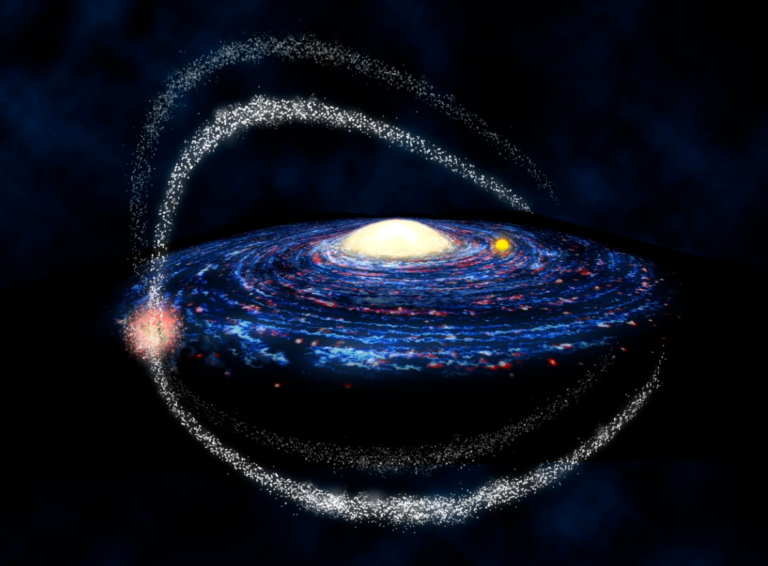A groundbreaking perspective on the dwarf galaxies in the vicinity of the Milky Way.
Challenging the conventional belief that dwarf galaxies are enduring satellites of our galaxy, a recent study suggests that many of these galaxies may face destruction shortly after entering the Galactic halo. Utilizing the latest data from ESA’s Gaia satellite, an international research team has demonstrated that dwarf galaxies may be in a state of imbalance.
Published in the Monthly Notices of the Royal Astronomical Society, the study prompts significant inquiries into the standard cosmological model, particularly regarding the prevalence of dark matter in our immediate cosmic vicinity.

Traditionally, it was assumed that the dwarf galaxies encircling the Milky Way had been long-standing satellites, orbiting our galaxy for approximately 10 billion years. This assumption rested on the belief that these galaxies must harbor substantial amounts of dark matter to shield them from the formidable tidal forces generated by our galaxy’s gravitational pull. The presumed influence of dark matter was thought to explain the significant disparities observed in the velocities of stars within these dwarf galaxies.
However, the latest Gaia data has unveiled a wholly different understanding of dwarf galaxy characteristics. Astronomers from the Paris Observatory—PSL, the Center National de la Recherche Scientifique (CNRS), and the Leibniz Institute for Astrophysics Potsdam (AIP) managed to chronicle the Milky Way’s history. This was achieved by establishing a link between the orbital energy of an object and its entry into the halo—the time when it initially succumbed to the gravitational field of the Milky Way. Objects arriving early, during a period when the Milky Way was less massive, exhibit lower orbital energies compared to more recent arrivals.
Surprisingly, the orbital energies of the majority of dwarf galaxies are considerably higher than that of the Sagittarius dwarf galaxy, which entered the halo 5 to 6 billion years ago. This suggests that most dwarf galaxies arrived much more recently, within the last three billion years.

The recent influx of nearby dwarf galaxies suggests an origin from beyond the Galactic halo, where the majority of such galaxies typically harbor substantial reservoirs of neutral gas. These gas-rich galaxies undergo a transformative process, losing their gas when colliding with the hot gas present in the Galactic halo. The intensity of the shocks and turbulence during this collision fundamentally alters the nature of these dwarf galaxies.
Formerly governed by the rotation of gas and stars, the gas-rich dwarf galaxies, upon becoming gas-free entities, experience a shift where their gravitational equilibrium is maintained by the random motions of the remaining stars.
The expulsion of gas from dwarf galaxies occurs in such a violently disruptive manner that it disrupts their equilibrium. Consequently, the velocities of their stars no longer align with their gravitational acceleration. The combination of gas loss and gravitational shocks resulting from their immersion into the galaxy elucidates the widespread velocities observed within the remnants of these dwarf galaxies.
A notable aspect of this study revolves around the role of dark matter. Firstly, the absence of equilibrium precludes the estimation of the dynamical mass of the Milky Way dwarfs and their dark matter content.
Secondly, in contrast to the previous paradigm where dark matter was presumed to stabilize dwarf galaxies, invoking dark matter becomes less tenable for objects that are out of balance. Indeed, if a dwarf galaxy already possessed a significant amount of dark matter, it would have preserved the stability of its initial rotating disk of stars, preventing the observed transformation into a galaxy with random stellar motions.
The recently observed arrival and subsequent transformations of dwarf galaxies in the halo offer a coherent explanation for various observed properties, including the distribution of stars at considerable distances from their center. These properties appear consistent with a lack of dark matter, challenging the traditional perception of dwarf galaxies as predominantly dark-matter-dominated entities.
This leads to numerous intriguing questions, such as the whereabouts of the dark-matter-dominated dwarf galaxies anticipated by the standard cosmological model around the Milky Way. Additionally, the challenge arises in determining the dark matter content of a dwarf galaxy when equilibrium cannot be assumed. The quest for other observational cues that can distinguish between the proposed out-of-equilibrium dwarf galaxies and the conventional model with dark-matter-dominated dwarfs becomes a pressing issue.
This article is republished from PhysORG under a Creative Commons license. Read the original article.
Do not forget to share your opinion with us to provide you with the best posts !




0 Comments